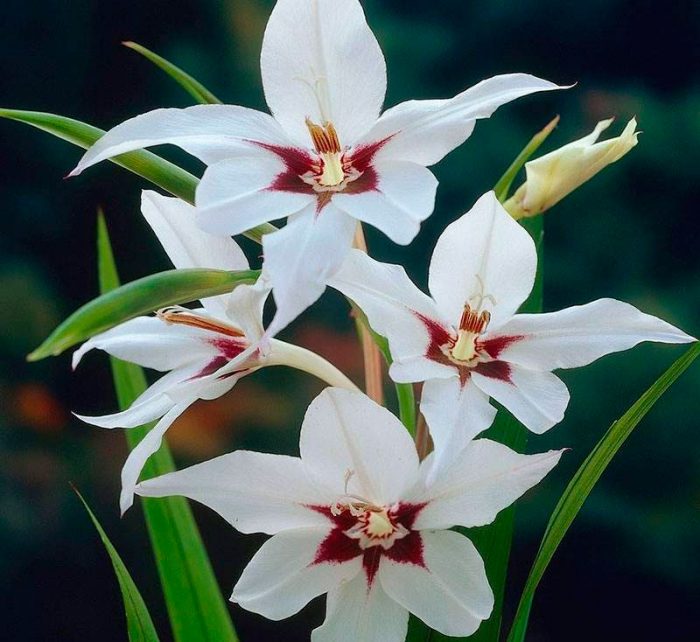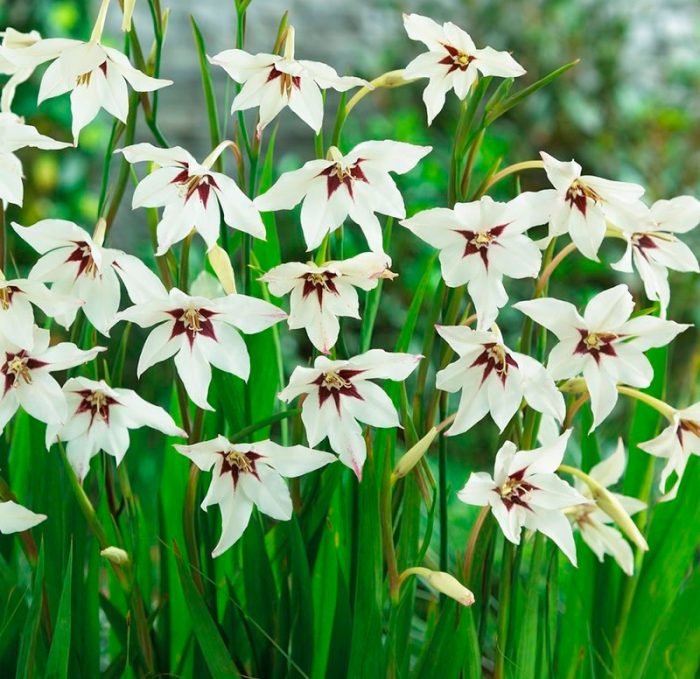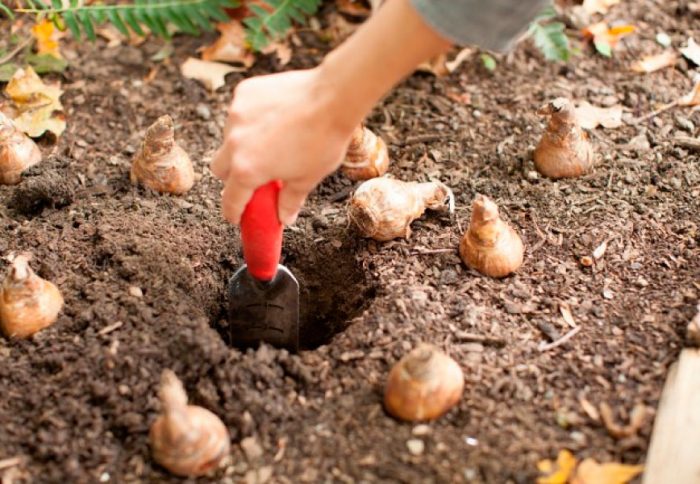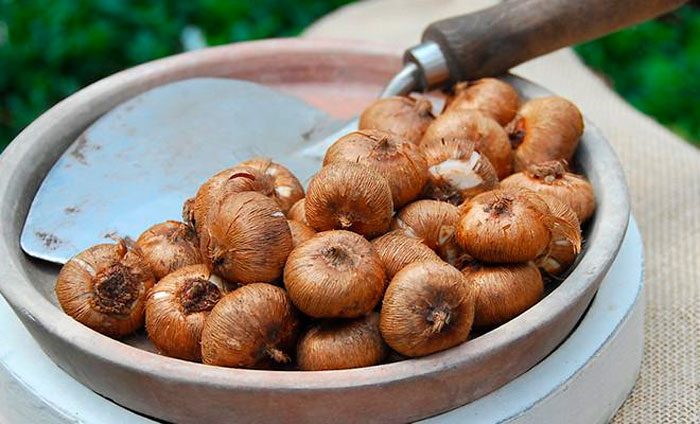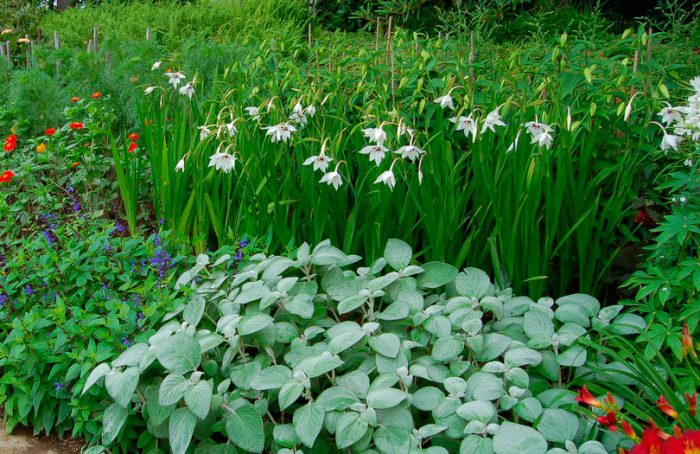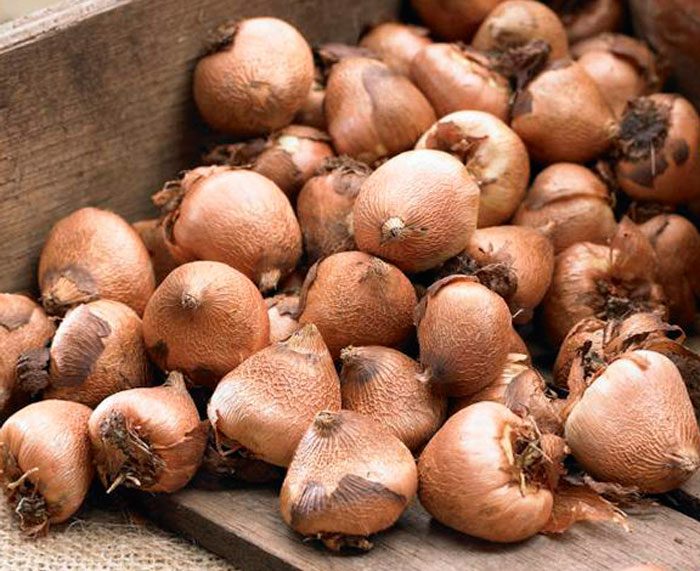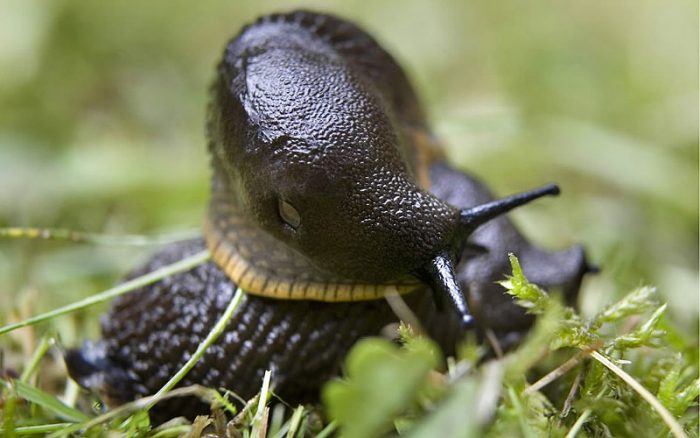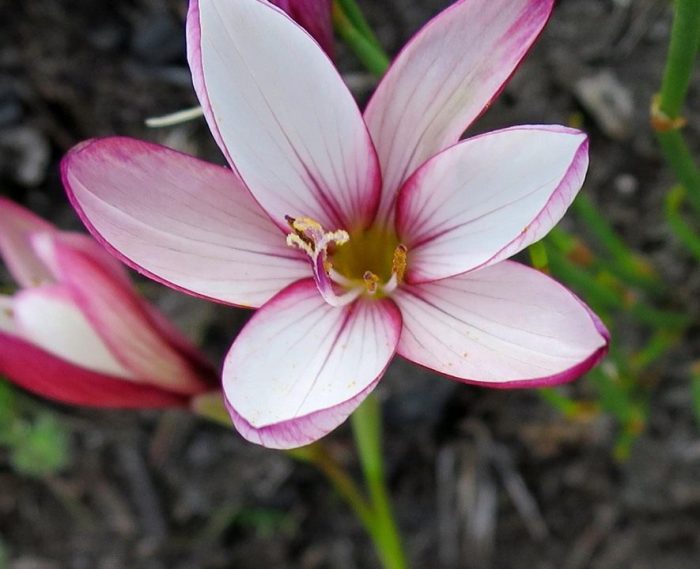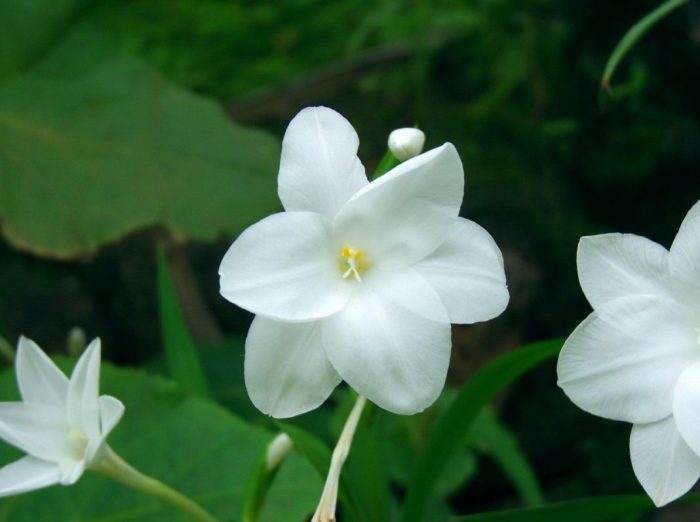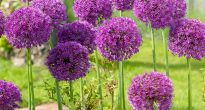Acidanthera is a herbaceous perennial plant that is a member of the Iris family. The name acidantera is derived from 2 Greek words, translated as "sharp" and "flower", this is due to the fact that the perianth of this plant has pointed lobes. This genus unites about 40 different species that can be found in natural conditions in the tropics of Africa. The most popular among gardeners is acidantera two-color, or acidantera Muriel, or gladiolus Muriel, or skewer Muriel, or beautiful-flowered gladiolus, or fragrant gladiolus: the cultivation of this garden plant began in 1886, while earlier it was allocated to a separate genus. Today, this species is a representative of the Gladiolus genus, as well as the wild-growing species of acidanthera, which are currently also called gladioli. But in order to avoid confusion, gladiolus Muriel is still called acidantera in special literature and among gardeners.
Content
Features acidants
Acidatera Muriel is a perennial, which reaches a height of 1.2 m. Rounded corms, painted in white, reach 30 mm in diameter, they are covered with a dense brown shell. In the upper part, the shoots can be branched or simple. The length of the greenish leaf plates is about 50 cm, they have a linear or xiphoid shape. Spike-shaped inflorescences consist of 3-10 flowers of white-cream color, which in diameter reach 5-12 centimeters. The flowers have a pleasant sweet scent that is attractive to bees, they have a long tube, as well as 6 pointed petals, which, closer to the base, change their color to dark crimson, deep purple or almost black. Flowering is observed in August-September. The opening of flowers occurs alternately from bottom to top, in this regard, the duration of flowering of each peduncle can be up to four weeks. The fruit is an elongated box with seeds inside.
Planting acidantera in open ground
What time to plant
Since the tropical plant acidantera is thermophilic, it is planted in deep spring (from the last days of April to the end of May), after the soil warms up. A well-lit area is chosen for planting. If it is grown in a region with a long and relatively cold spring, then in order for the acidantera to bloom in a timely manner, its corms need to be planted for distillation in May. Take a pot that is 12 to 15 centimeters across and filled with a permeable, loose soil mixture. 3–6 onions are planted in it to a depth of 40 to 50 mm. Then the pot is removed on a well-lit windowsill or in a greenhouse. In the last days of May, flowers should be planted in open soil. From such grown corms, powerful bushes are obtained, which are distinguished by lush and long flowering.
Landing rules
In mid-latitudes, as well as in regions with a warm climate, acidanters are planted directly into open soil. A site with a nutritious slightly acidic soil must be pre-prepared, for this it is dug up, fertilizing it (humus or compost), as well as sand for drainage, if necessary. Then the surface of the site must be leveled.
Before planting, corms must be treated with a weak solution of potassium manganese, when they dry out, they should be planted on the site. The onions are planted in groups of 8-30, they are buried in the soil by 8-10 centimeters (depending on the size of the planting material), while a distance of 1-20 centimeters should be kept between them. The planted bulbs need abundant watering.
Caring for acidantera in the garden
You need to care for acidantera in the garden in the same way as for any other garden flower. She needs timely watering, weeding and loosening of the soil surface between the bushes. To significantly reduce the number of weeding and watering, the surface of the site should be covered with a layer of mulch, which should be used only with organic materials, for example: peat, cut grass, sawdust or humus. In order for the bushes to look spectacular and neat all the time, the flowers that have begun to fade should be cut off in time.
How to water and feed
This culture needs systematic and moderate irrigation, especially when hot, dry weather is observed for a long time. It should be remembered that this flower does not tolerate both drought and stagnation of liquid in the soil. If the plant is flooded, it can lead to the appearance of rot on the root system. During flowering, watering should be reduced, however, the soil on the site should always be slightly damp. During watering, care must be taken that liquid droplets do not fall on flowers and foliage, otherwise burns may form on their surface. You need to water the flowers with settled water, which should not be cold. After the liquid is completely absorbed into the soil, its surface should be loosened, while pulling out all weeds.
It is necessary to feed this flower crop with mineral complex fertilizers, which are applied to the soil. During the season, it should be fed 2 or 3 times. The first time the plants are fed with organic fertilizers, the second time - during the active growth and build-up of the green mass, fertilizers containing nitrogen are used for feeding, and a phosphorus-potassium complex should be added to the soil shortly before the beginning of budding. They feed the Acidantera, as a rule, at the same time with watering. Such a plant cannot be fed with fresh organic fertilizers.
Transfer and wintering
If in the region where this crop is grown, in winter the air temperature drops to minus indicators, then the bulbs should be removed from the soil in autumn, and in spring they must be planted again in open ground.
What is the best time to dig up the bulbs? After the plant has faded, its peduncles must be removed, but the lower leaf plates should remain on the bush until the first frost. After the cold weather sets in the street, the aerial part of the flower must be cut off, and the corms extracted from the soil are removed for storage.
How to save the bulbs? The dug out bulbs need to be thoroughly dried, for this they are kept at a temperature of about 20 degrees for 4 weeks. Then, rot-damaged scales, roots are removed from them, and then they are soaked in a solution of a fungicidal preparation and dried. Prepared planting material for storage must be folded into paper bags or perforated cardboard boxes for free access of fresh air. They are stored at temperatures between 15 and 16 degrees until the onset of spring. If the room is cooler, then the bulbs will plunge into a state of rest, and if it is warmer, the bulbs will begin to germinate much earlier than necessary. The bulbs are planted for forcing in March, and if the region has a relatively warm climate, then in the last days of April they are planted directly in open soil.
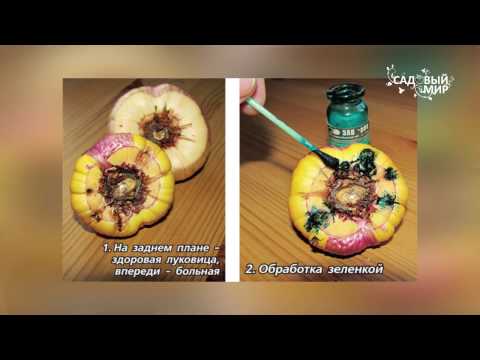

Watch this video on YouTube
Reproduction of acidants
For reproduction of such a flower, seeds are used, as well as corms and children. How to propagate it with bulbs is described in great detail above. A rather large number of children are growing on corms. In spring, before planting bulbs in open ground, it is necessary to tear off all formed children from them, which are planted in schools for growing. If the plants are provided with proper care, then in the same autumn they will begin to bloom. The lifespan of an adult bulb is approximately 5 years.
It is also quite simple to grow this plant from seeds. Seeds are sown in winter for seedlings in the same way as always, while they do not need to be stratified. The soil mixture needs fertile, its approximate composition: peat, garden soil and sand (1: 1: 1). The container must be placed in a relatively warm place (about 20 degrees). The substrate should be constantly slightly damp, for this you need to cover the container with glass or film, and the surface of the soil mixture must be systematically moistened from the sprayer. Crops need daily ventilation, and condensate must be removed from the shelter in a timely manner. Seedlings are picked in April or May, when 2 true leaf plates are formed. Individual pots are used for picking, and it is better if they are peaty, in this case, during planting of seedlings in open soil, its root system will not need to be injured again. The seedlings of acidantera are characterized by a fairly rapid growth, and in the summer they can already be planted in a flower bed. In the third year of life, the first flower stalks should grow.
Diseases and pests
Bulb mites, slugs, aphids and scale insects can settle on acidander. In order to prevent the bushes, it is recommended to spray with ammonia or mustard powder, these folk remedies are absolutely harmless to people, animals and plants. If scale insects or aphids do settle on the bushes, then they and the surface of the soil under them should be sprayed with insecticidal preparations. Acaricides are used to kill ticks. If slugs appear, then they will need to be collected by hand. It is also recommended to spread pieces of boards and slate on the surface of the site, where gastropods love to hide from the scorching sun's rays, they will only need to be collected and destroyed.
Acidantera can get sick with powdery mildew, mosaics, root rot, and rust. In the bush affected by the mosaic, the leaf plates become variegated. This disease is incurable, and the affected bush must be burned.The remaining of the listed diseases are fungal, fungicides are used to treat them, for example, a solution of Bordeaux liquid or copper sulfate (1%). In order to prevent the plant from being damaged by infectious diseases, it must be properly looked after following all the agrotechnical rules of culture, and also not forgetting about preventive measures. The most common causes of the development of fungal diseases: poor drainage or none at all, correct or too abundant watering, and a large number of weeds.
Types and varieties of acidantera with photos and names
The most popular among gardeners is the two-color acidander species, its detailed description can be found above. You should also know that a hybrid of this species, called Tubergen acidantera, is quite popular among gardeners: its flowers are much larger than that of the main species. Other types of acidantera (gladiolus) are much less often cultivated:
Acidanthera tropical (Acidanthera aequinoctialis)
The height of the bush is about 1.3 m, the leaf plates are multi-ribbed. The structure of bilateral inflorescences includes 5 or 6 white flowers, which have a long tube and crimson or purple specks. There is an assumption that this species is a taller tropical form of acidantera bicolor.
Acidanthera white (Acidanthera candida)
It occurs naturally in tropical regions of Africa. The inflorescences are white and very aromatic. The straight stem is slightly leafy.
Also known are species such as: short-tubular acidanters, Cape, cereal-leaved, Fourcade, few-flowered, tubular, pink-white and broad-petaled.
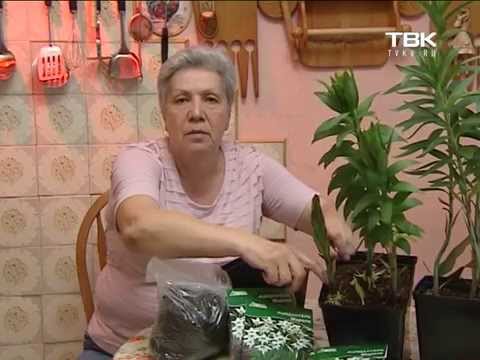

Watch this video on YouTube

